Pacific wildlife viewing: from grizzlies to orcas
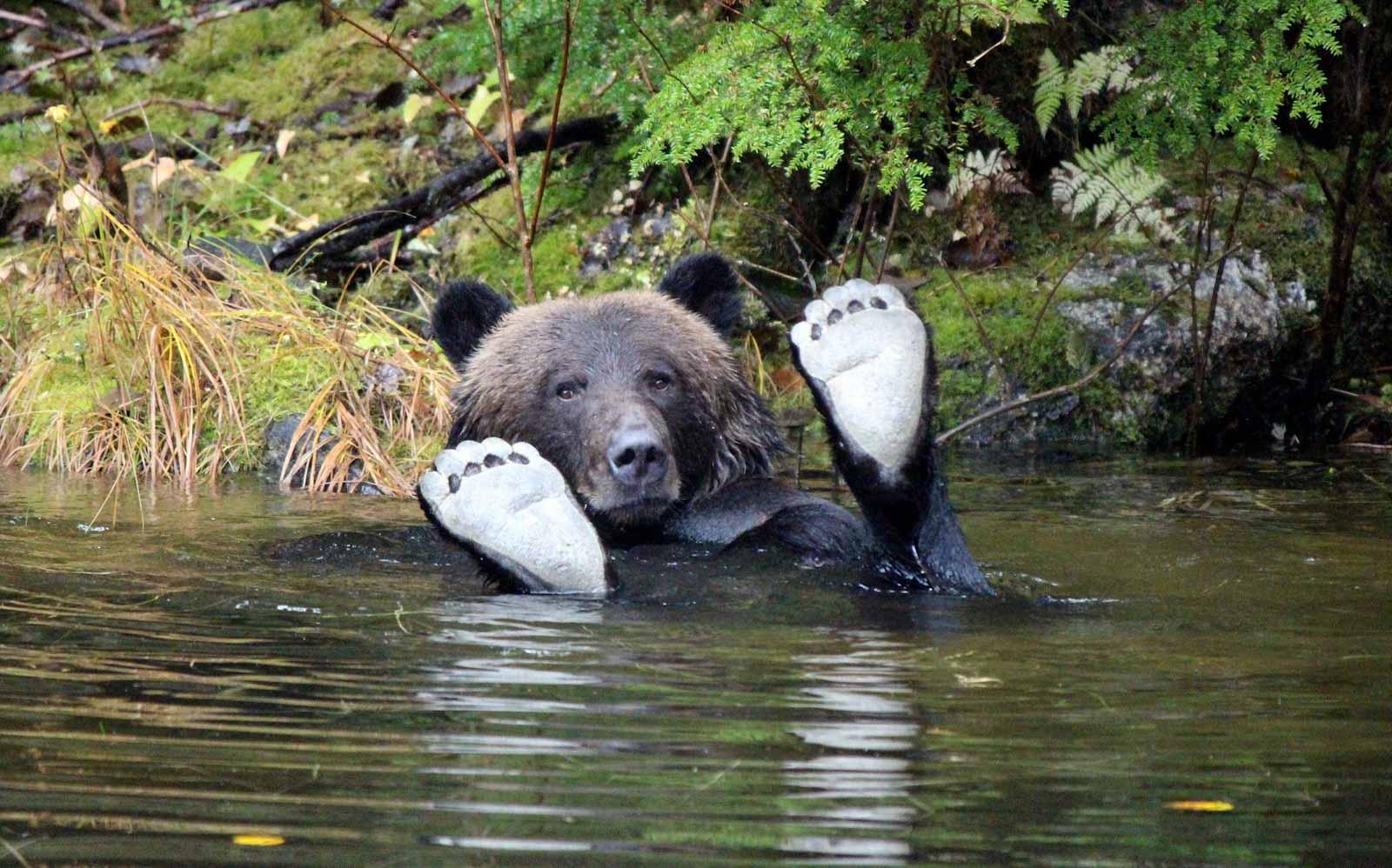
A grizzly bear feeding on salmon in the wild; a whale breaching just off a boat's bow; eagles gathered in the thousands; images like these might feel like they're pulled right from the Discovery Channel, but they're here for everyone in British Columbia.
Over 1,110 species of animals call BC home--more than any other province in Canada. Much of this wildlife is sheltered in BC's 34 million acres of parks, conservancies, ecological reserves and protected areas. At the same time, there are areas of BC where you might see elk on the side of the highway or spot a family of bears while riding a chairlift.
Rather than leave things to chance, countless wildlife viewing tours and excursions make all of these stunning animals accessible to visitors. By joining a tour, you not only increase the odds of coming face to face with nature, you also know you're doing it safely and in an environmentally-conscious way.
The key to planning your wildlife viewing trip is to start with the animals themselves. Below we break down key information on when and where to visit based on some of the most popular wildlife in BC.
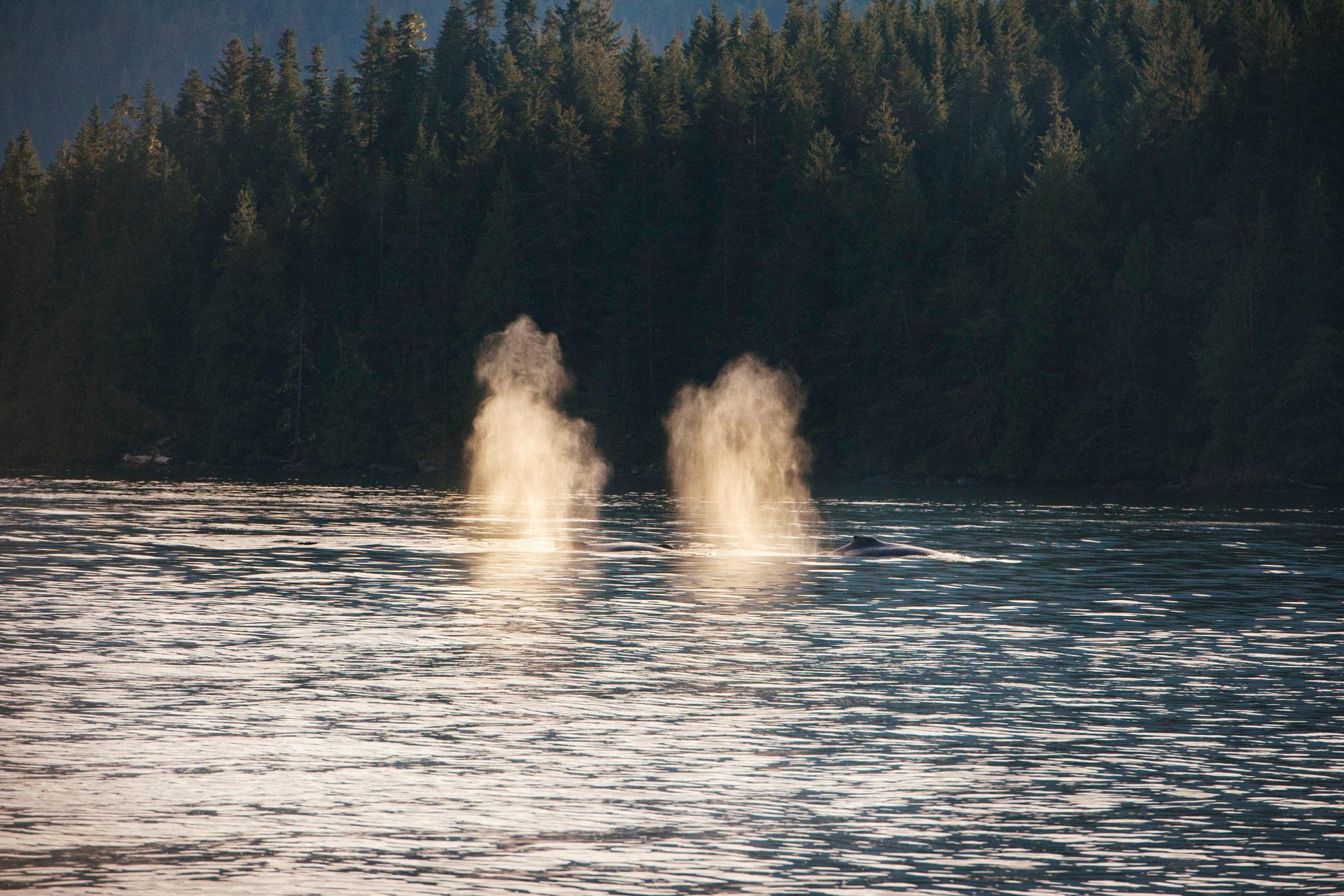
Pacific Grey Whales
When: Mid-March to mid-April
Where: The West Coast of Vancouver Island
Every March and April, about 20,000 Pacific grey whales travel along the west coast of Vancouver Island, during one of the longest migrations of any mammal--a 5,000-mile journey between their winter calving lagoons in Mexico and their summer feeding grounds in the Bering and Chukchi seas.
The residents of Tofino and Ucluelet on Vancouver Island welcome back the whales each year with a party. The Pacific Rim Whale Festival, a nine-day event at the start of prime whale-watching season, has over 90 events from arts shows to chowder contests. Charter boats and scheduled boat tours head out to see the animals in the open water (keeping a respectful distance), or you can stand on the shore and watch for the tell-tale spouting, as these massive mammals travel quite close to land. You can also see resident grey whales in Clayoquot and Barkley sounds anytime between March and October.
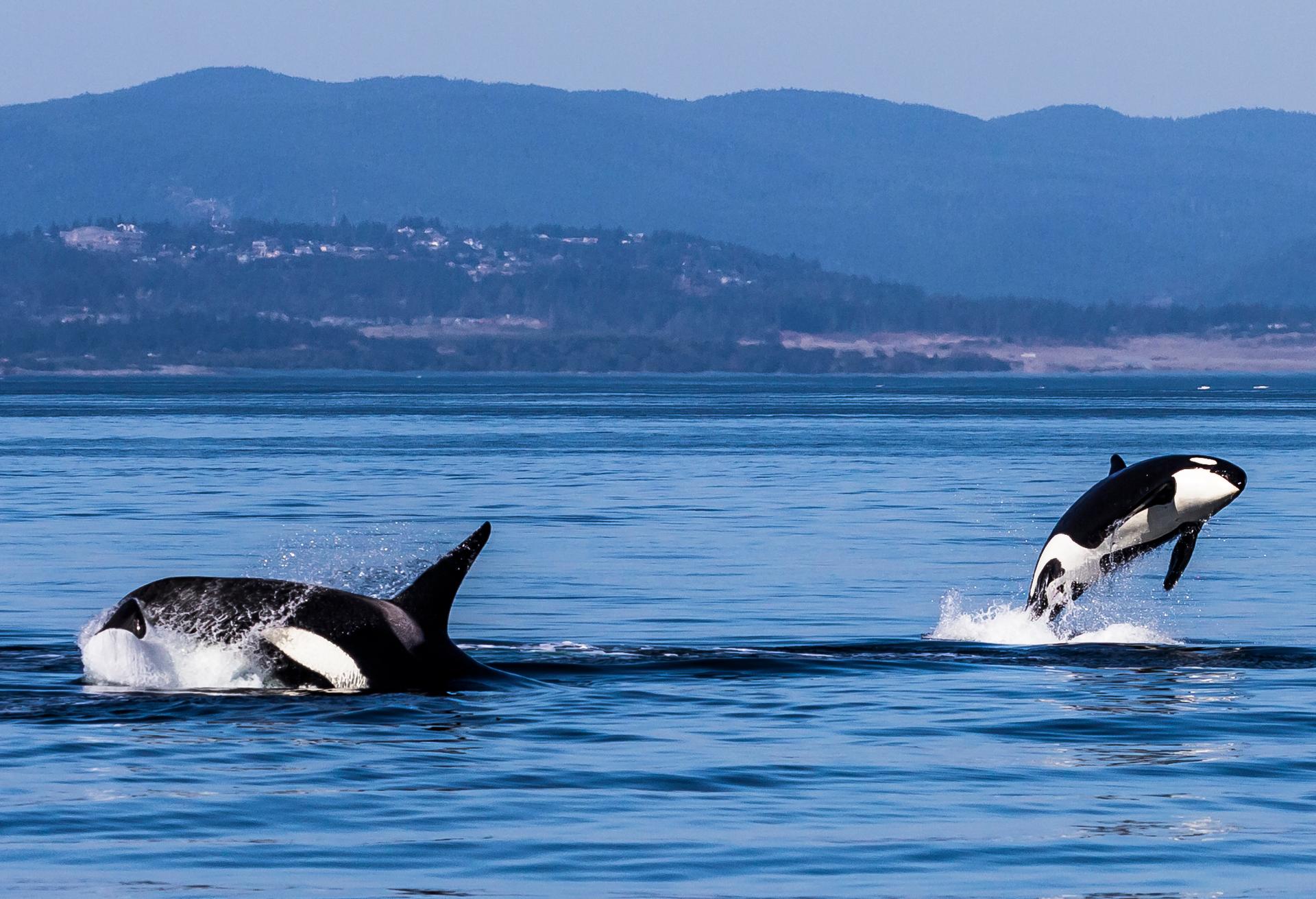
Orcas
When: April to October
Where: The Strait of Georgia, Strait of Juan de Fuca and Johnstone Straits, east of Vancouver Island.
Throughout the summer, whale-watching boats leave from Victoria, Sooke and Sidney on Vancouver Island, downtown Vancouver, and from Steveston Fishing Village in Richmond, south of Vancouver, hoping for a visit from some of the estimated 85 orcas, or killer whales, residing in the southern Strait of Georgia between the BC Mainland and Vancouver Island.
BC's richest orca habitat, though, is the Johnstone Strait off Vancouver Island's northeast coast. Approximately 250 resident orcas are found in these waters. They come for salmon, socialising and--unique among orca populations-- to rub their bodies on the area's smooth pebble beaches. Whale-watching boats and kayak tours leave from the towns of Port McNeill and Alert Bay, and from Telegraph Cove, a historic fishing village built on stilts along the ocean's edge. While in Telegraph Cove, check out the Whale Interpretive Centre's collection of giant skeletons of these magnificent creatures.
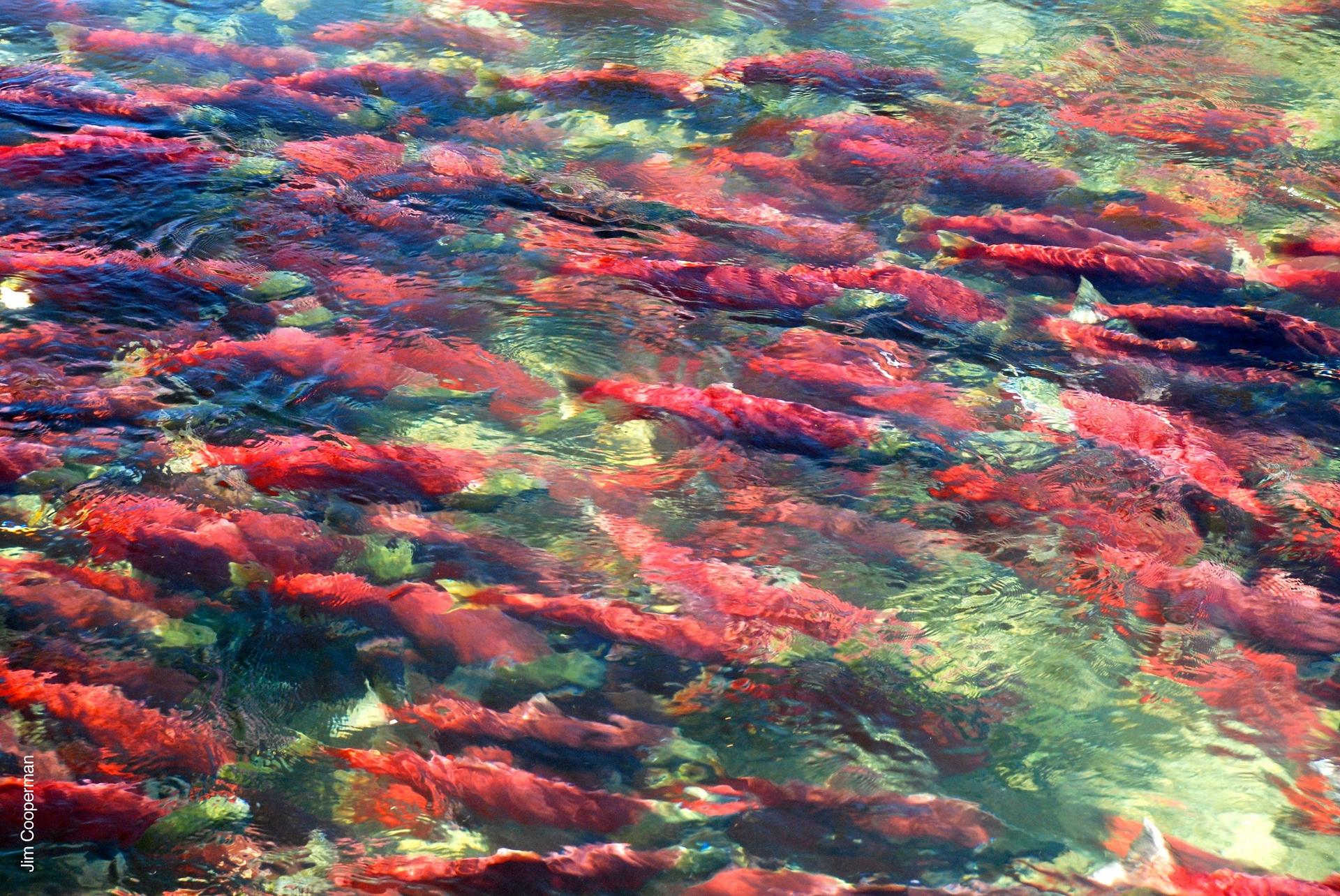
Salmon
When: Best viewing season July to November
Where: North Vancouver, Kamloops, Victoria, Campbell River and Bella Coola.
Throughout summer and fall, all five species of North American Pacific salmon leave the ocean and return to the streams and rivers of their birth to spawn. The great salmon runs are fascinating to watch as thousands of fish battle their way upstream, attracting eagles and other predators en route.
One of the richest runs takes place on the Adams River, north of Kamloops in the Thompson Okanagan. Millions of salmon make their way back to the seven-mile stretch of river which runs through Roderick Haig-Brown Provincial Park to lay their eggs before they die. Other good places to watch salmon runs are in Goldstream Provincial Park, north of Victoria, and the Capilano Salmon Hatchery in North Vancouver.
If you want a less traditional experience, try snorkelling with salmon. Kynoch Adventures in Bella Coola also offers an equally memorable salmon snorkelling excursion.
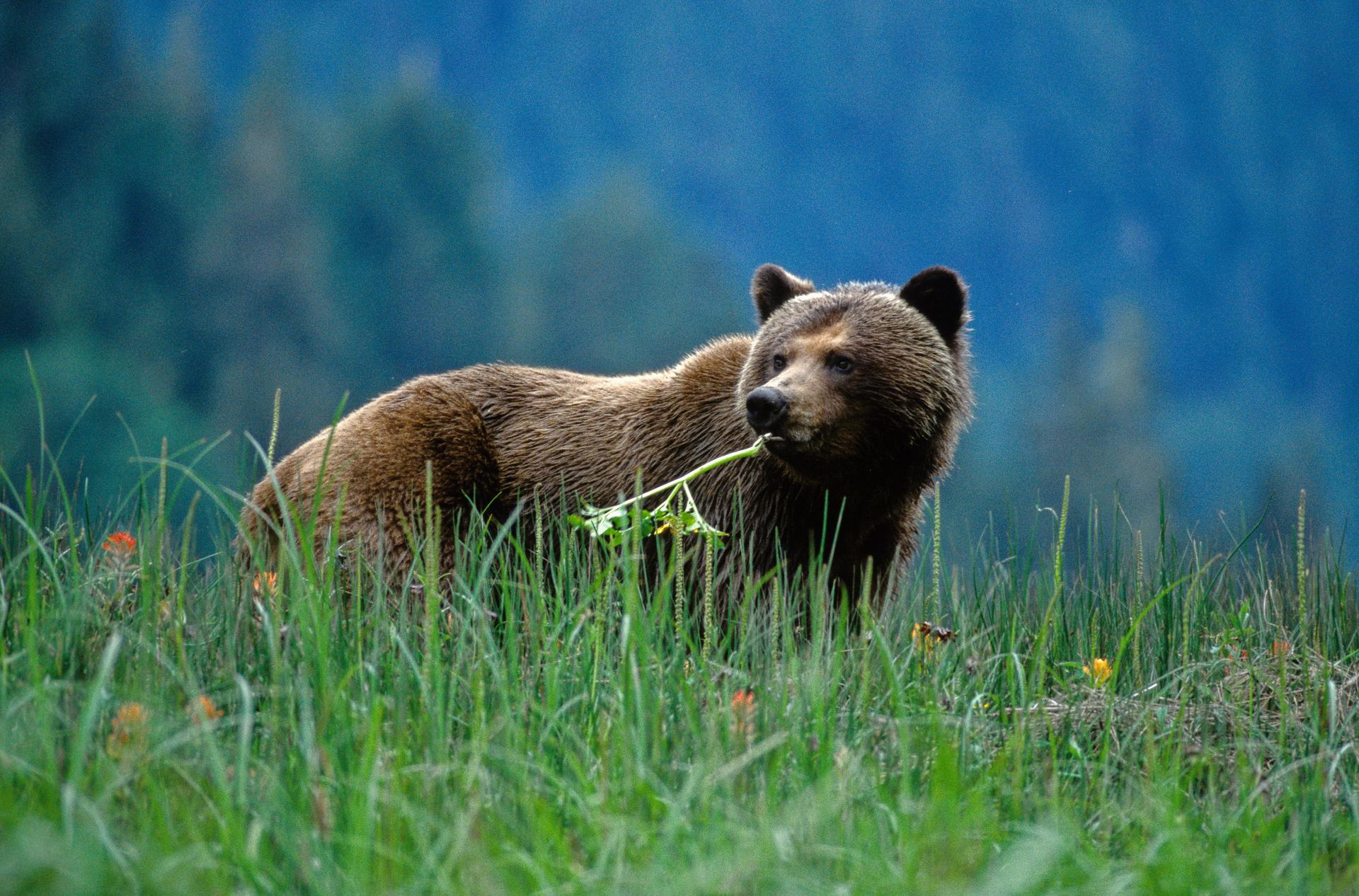
Grizzly Bears
When: May to October
Where: The Khutzeymateen/K'tzim-a-deen Grizzly Sanctuary and the Great Bear Rainforest
The Khutzeymateen/K'tzim-a-deen Grizzly Sanctuary, 28 miles northeast of Prince Rupert, was established as the first area in Canada to be protected specifically for grizzly bears, and is one of the best places in the world to see these magnificent animals in their natural habitat. Accessible only by boat and/or floatplane, the site is home to about 50-65 individual bears, and is best visited between May and September when the bears can be seen roaming the shore.
A rich population of grizzlies can also be found in the Great Bear Rainforest, a vast tract of wilderness (more than twice the size of Northern Ireland) on BC's road-less mid-coast. Two floating lodges in the vicinity, Knight Inlet Lodge and Great Bear Lodge, offer grizzly bear-viewing tours from spring through autumn.
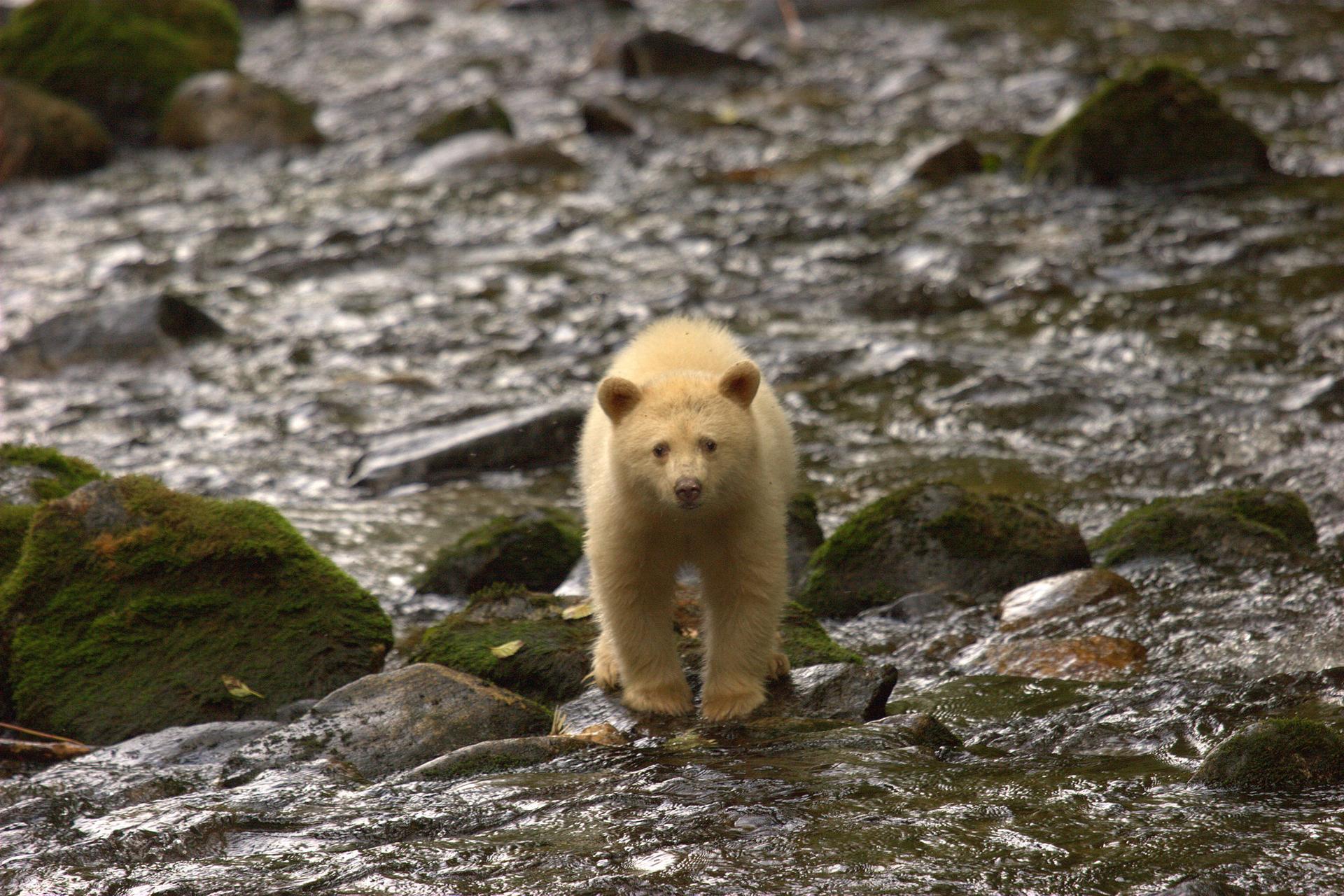
The Kermode (Spirit) bear
When: June to October
Where: Princess Royal Island in the Great Bear Rainforest
There aren’t just grizzlies in the Great Bear Rainforest. The magical Princess Royal Island is home to the rare Kermode (Spirit) bear, a sub-species of black bear found only in this part of the world and the official mammal of BC. About 10 per cent of the black bears born in this area carry a recessive gene that gives them a naturally white coat. Companies operated by the local Kitasoo/Xai’xais First Nations people in the nearby village of Klemtu offer tours to view the bears, with September and October being the months offering the best chance of a sighting. Klemtu is accessible by Pacific Coastal Airlines, by chartered floatplane or by BC Ferries' service.
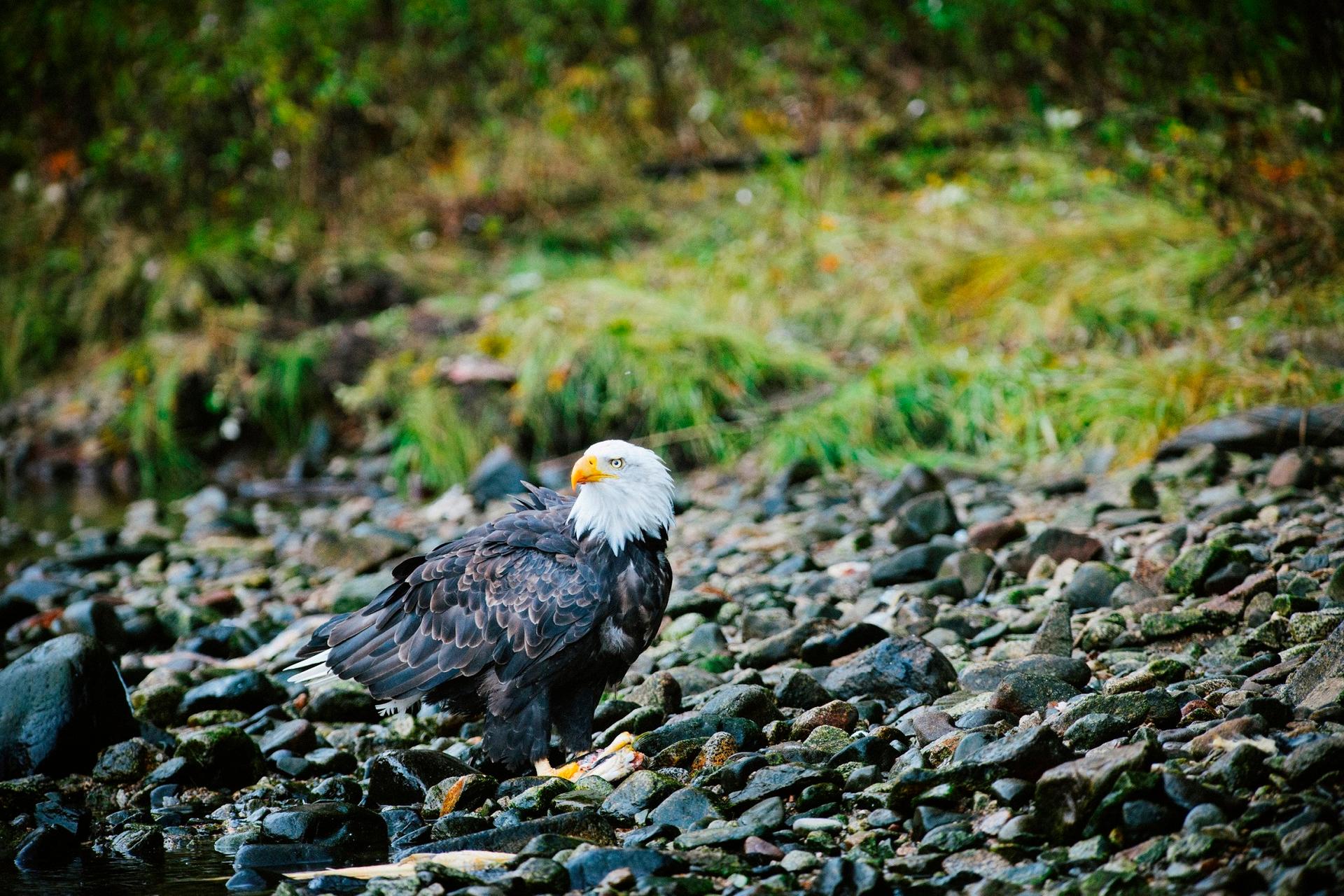
Bald Eagles
When: Mid-November to mid-February
Where: Brackendale Eagles Provincial Park, Squamish, Harrison Mill, and Goldstream Provincial Park, Victoria
One of the world's largest concentrations of bald eagles gathers to feed on salmon at Brackendale Eagles Provincial Park near Squamish, about an hour from Vancouver. Between 650 and 1,000 eagles are usually spotted during a single day each January. Guided walking tours are available, while several rafting companies offer guided eagle-viewing float trips. Watching from a gently floating raft on the Cheakamus River is one of the best ways to observe the eagles without disturbing them.
Eagles also gather in record numbers at Goldstream Provincial Park, 12 miles north of Victoria, to feed on the salmon runs there. A video feed and telescopes in the park's Visitor Centre provide close views of the eagles and naturalists are on hand at all times to answer visitors' questions.
Closer to Vancouver, Fraser Valley nearby Harrison Mills/Harrison River area hosts a large population of bald eagles. Every year in mid-November Fraser Valley Bald Eagle Festival celebrates the season of eagles and salmon with series of activities from eagle-viewing boat tours to guided interpreted walks.
Birds, bison, elk, sea lions, otters... there are so many animals we didn't even mention. To find out more about local wildlife or to book an excursion, visit the Hello BC website.